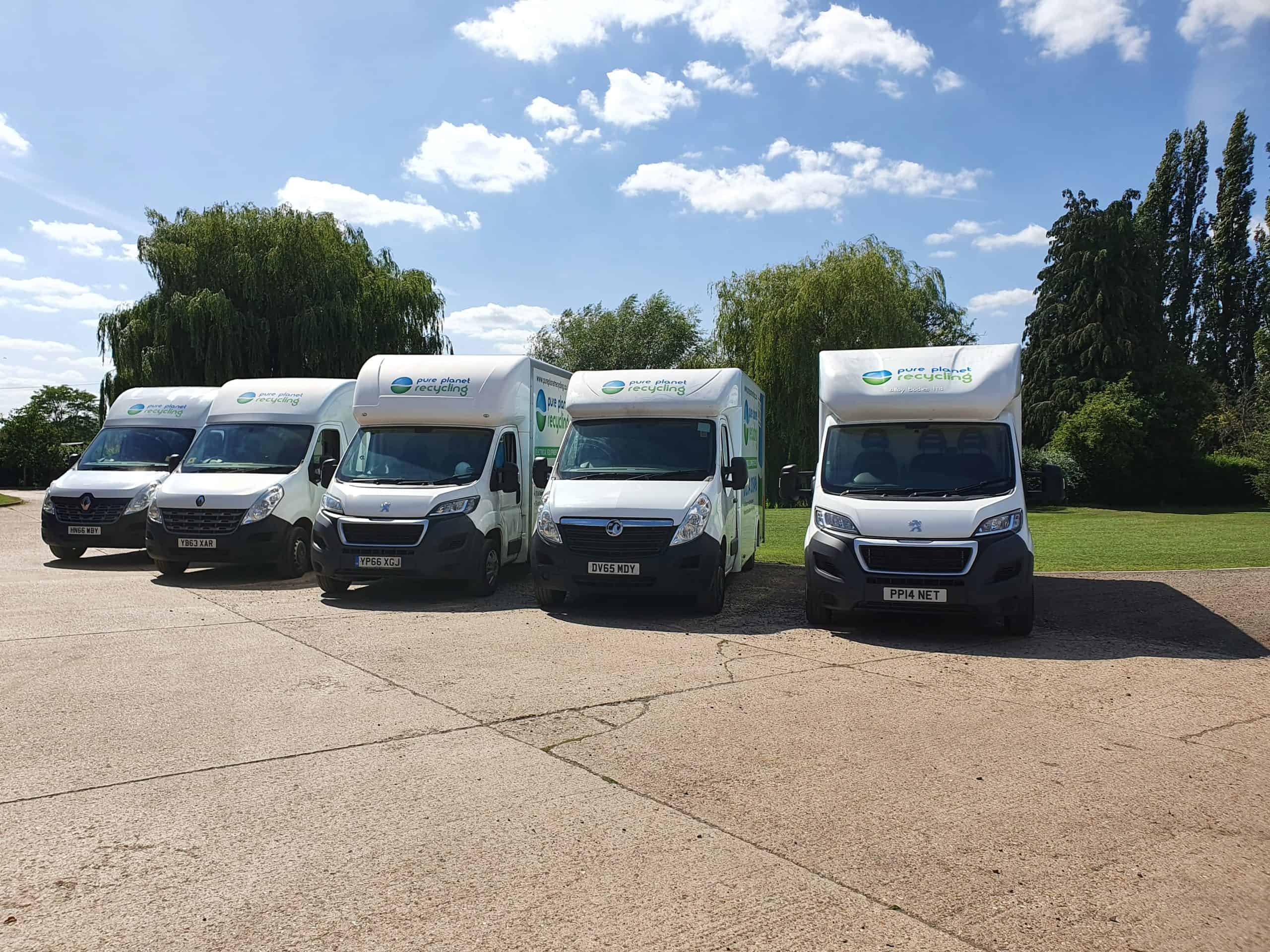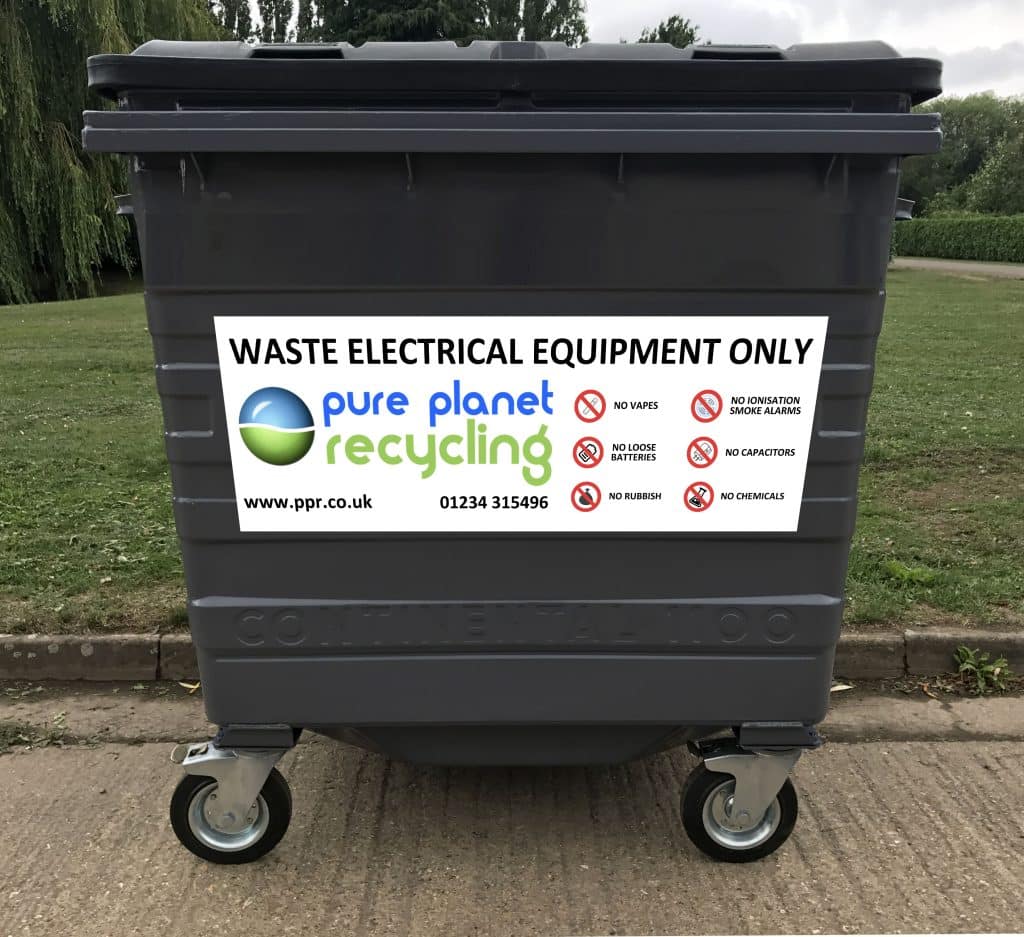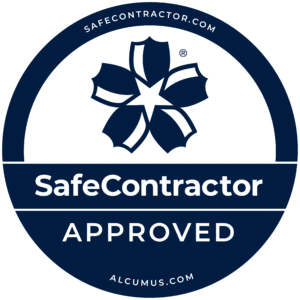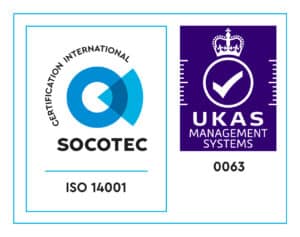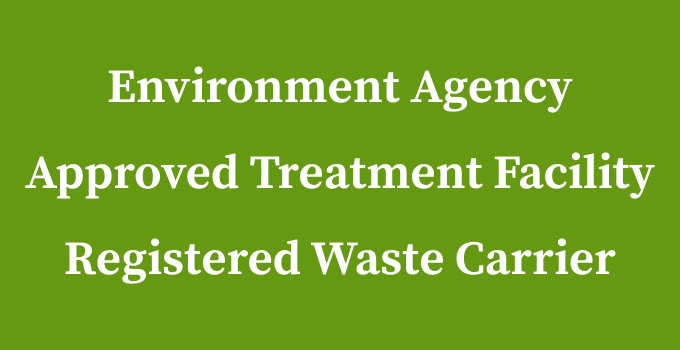Properly storing Waste Electrical and Electronic Equipment (WEEE) is crucial for environmental safety and compliance with UK regulations.
The correct storage helps prevent hazardous substances from polluting the environment, protects individuals handling the waste, and makes recycling more efficient.
To comply with the regulations, WEEE must be stored on an impermeable surface and covered with a weatherproof covering. However, we’d like to advise that there are further steps required to properly store electrical waste regardless of your business’s size or type.
1. Assess Your Waste and Identify Hazardous Components
Before beginning to store your waste, look at what you are producing, the type, the volume and frequency of disposal. If you are new to a company, check back through Duty of Care Paperwork and Hazardous Waste Consignment notes for this information.
Identify the hazardous components in your waste electricals. It is better to segregate loose hazardous WEEE into separate containers. Items like batteries, capacitors, and certain types of lighting contain hazardous substances. Separate containers reduce the risk of fire, accidental damage, or the release of dangerous substances.
For example, fluorescent light tubes contain mercury powder and are breakable, so they should be stored separately and with care.
2. Use Appropriate Containers
Use sturdy, leak-proof containers for all electrical waste. The type of container required will depend on the type and volume of electrical waste you produce. For example, a small office could collect smaller items in a small plastic box, whereas a wheelie bin may suit a factory producing regular volumes.
Clearly label all containers with their contents to avoid confusion and ensure proper handling. For example, we implemented a sticker to show the types of electrical waste that can not go into our electrical waste bins.
We purchase refurbished containers and bins to give old containers a second life. They are as good as new and saves on new materials being used. We made this an environmental objective within the business to reduce our Environmental impact.
Using appropriate containers makes it easier for the company to collect the waste and minimises waste handling at the time of collection. Wheelie bins, boxes, pallets, etc., can be exchanged once full, making this safer than a pile of unsorted electrical equipment.
3. Avoid Crushing and Breaking
Electrical equipment such as TVs, Laptops, and Printer toners can be easily damaged and release hazardous components.
Store your WEEE in a manner that avoids crushing or breaking items, especially fragile equipment. Do not throw electrical waste into containers, instead, stack items carefully and avoid placing heavy objects on top of delicate ones.
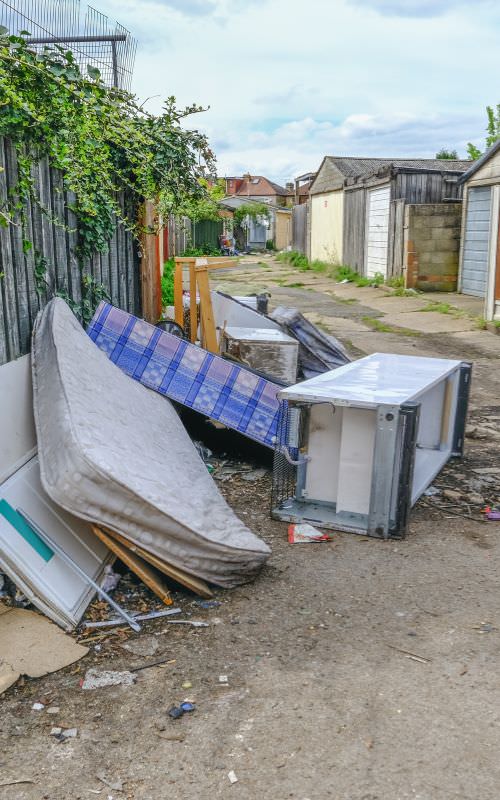
4. Keep Dry and Secure
Storage areas or containers should be kept locked to prevent unauthorised access. We have in the past, arrived at a site where someone has damaged or stolen the electrical waste. Unfortunately, fly-tipping of electrical waste is becoming commonplace.
Ensure that storage areas for waste electricals are dry and protected from the elements. As previously mentioned, WEEE must be stored on an impermeable surface and have a weatherproof covering. We usually advise storage within a building, but if you can only store it outside, ensure it is in a watertight, lockable container.
Moisture can cause corrosion and make electrical waste hazardous. Water running off electrical waste can pollute the local environment and make you liable to fines or prosecution. We advise that a spill kit be placed near electrical waste storage to quickly contain any spills that may occur.
5. Regularly Inspect Storage Areas
Regularly inspect your storage areas to ensure no leaks, spills, or other issues with containers. Containers or wheelie bins can easily be repaired if damaged, but the quicker you spot an issue, the less impact it will have. Address any problems immediately to maintain safety and compliance.
We recommend speaking to your contractor if you notice that waste has been damaged or stolen. If you are renting a storage container, they may need to claim on their Insurance or, at the very least, provide a replacement container. We also recommend alerting the Environment Agency. Stolen waste is often fly-tipped, and your waste may be traced back to your company. It is better to record the theft than to have the authorities think you have fly-tipped your waste.
6. Arrange for Collection and Recycling
Contact authorised WEEE collection and recycling services to arrange pickups. Ensure that the service provider is certified and follows all UK regulations for handling and processing electronic waste.
Do not simply choose the cheapest contractor, as they may not be a bona fide WEEE Recycler. You can check the credentials of a waste contractor on the Public Register of the UK Government website. You have a duty of care to ensure your waste is handled correctly.
Please contact us if you have any questions or need assistance storing your electrical waste. We provide solutions to help businesses recycle their electrical waste responsibly.
